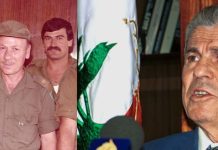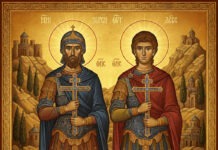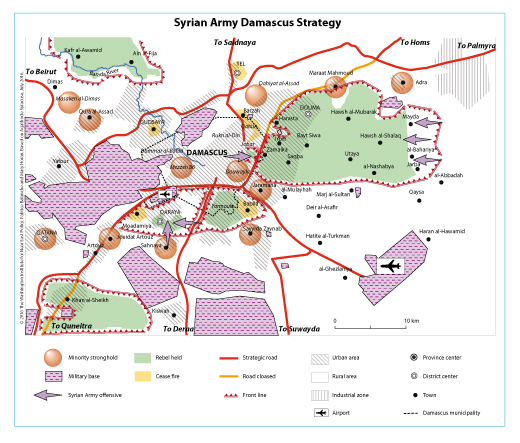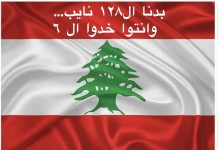Damascus Control Emboldens Assad Nationally
Fabrice Balanche/The Washington Institute/August 04 16
Without a real military threat to the capital, neither the Syrian leader nor Iran will accept a political transition, even if Russia agrees to one.
The next round of Geneva peace negotiations for Syria is set to begin this month, but President Bashar al-Assad’s recently tightened grip over Damascus already has the Syrian opposition in a tough spot. Indeed, focus on the battle of Aleppo, where regime forces have also advanced recently (see “Kurdish Forces Bolster Assad in Aleppo”), has distracted attention from the Syrian army’s slow but sure recapture of the rebel-held outskirts of the Syrian capital.
Creating a Favorable Demographic Balance for the Regime
Since the 1970s, the Syrian army has had a considerable presence in the Damascus area, with large military bases occupying the south and west of the capital. Officially, this military posture has been intended to protect Damascus against Israel, given that the Golan front is some fifty kilometers away. The unofficial goal of this setup, designed by former president Hafiz al-Assad, was better control of Damascus. Bashar’s father believed that whoever held Damascus held Syria. Part of the elder Assad’s effort to control Damascus after seizing power in a coup in November 1970 was to station tens of thousands of troops, along with Alawite officials and their families, in the city. Whereas in 1947 only 300 Alawites lived in Damascus (out of about 500,000 metropolitan-area inhabitants), that figure had soared by 2010 to more than 500,000 (of about 5 million in the metro area), or a quarter of Syria’s Alawite community. More Alawites thus lived in Damascus than in any other Syrian city.
Beginning in the 1970s, the regime also sought to distribute Alawites strategically throughout the city. In this arrangement, regime officials still live in Malki, around Assad’s private residence, while lower-ranking civil servants inhabit Mezzeh 86, a large area overlooking the wealthy neighborhoods of Mezzeh. Also attracting Alawites are the originally Druze-Christian suburban towns (e.g., Jdeidat Artouz, Jaramana, and Sahnaya), which offer a more sustainable lifestyle than the conservative Sunni areas of Ghouta (e.g., Douma, Daraya, Zamalka) — which have become strongholds of the rebellion.
Since Hafiz al-Assad’s rise, the Syrian regime likewise allowed Alawite, Druze, and Christian neighborhoods to expand close to the strategic axes linking Damascus to the rest of the country and Lebanon, while also interrupting the city’s “Sunni crescent.” This is the case in the large suburb of Jaramana, which beginning in the 1980s was developed along the road to Damascus International Airport, fitting the regime’s strategic plan to separate the city’s Sunni suburbs — West and East Ghouta.
City Planning for Security
In the city’s northeast, mostly non-Sunni officials and employees in industrial public-service jobs are housed in public units in Dahiyat al-Assad, Maarat Mahmoud, and Adra, loyalist neighborhoods helpful in supporting defense of the city’s northeastern entrance. Thus, given that the direct route from Damascus to Homs has been under rebel fire since April 2012, traffic has been diverted to the northern ring road, from which it can reach the Damascus-Homs highway. In the city’s southwest, densely situated military camps and Druze-Christian communities facilitate the protection of roads to Beirut, Quneitra, and Deraa. The Sunni localities of Moadamiya, Daraya, the Yarmouk Palestinian refugee camp — which is officially a Damascus neighborhood — and Babila are bordered to the south by the Druze-Christian belt, reinforced since the 1970s by increasing numbers of Alawites, and the southern ring road, which has become an important line of defense for Damascus against the rebel-controlled suburbs.
As a whole, the city is surrounded by a large ring road and cut by wide avenues that create breaks in the urban space. These streets, designed in the 1970s, were not meant to ease traffic flow, a point made especially clear when one considers that few Syrians then had private cars and that developers did not expect private car ownership to balloon. Rather, this was a classic example of security planning, with the road layout optimized for the deployment of armored vehicles to deter any major event. In the late 1970s, Damascus’s Old City fell victim to this strategy when a portion of its souks was razed to make way for a shopping area with wide streets that intersected at right angles. The regime did not create wide avenues everywhere, though, allowing informal suburbs with narrow, mazelike streets to proliferate outside the city. These suburbs ultimately became the stronghold of the uprising.
Encirclement of Rebel-Held Suburbs
The rebels’ failure in Damascus can be attributed mainly to their inability to unite West and East Ghouta and cut off the road to the international airport. Jaramana was strongly defended by the Syrian army and, above all, by local Druze members of the pro-regime National Defense Army. The population has withstood the rebels’ assaults, which have included car bombs and rocket attacks. Thus, from Jaramana the Syrian army has expanded its hold on the two sides of the airport road, encircling both Sunni parts of Ghouta.
The military siege on the rebel areas around Damascus is being accompanied by a food embargo and airstrikes intended to scare civilians. The basic principle of counterinsurgency, to separate civilians from rebels, is being applied here primitively, as it has been in Aleppo. In Daraya, only 4,000 people remain, according to the United Nations, of an original 80,000 inhabitants in 2010. This siege is also meant to encourage other rebel localities to accept a modus vivendi with the regime. Babila, Moadamiya, Qudsaya, al-Qabun, and Barzah have thus concluded ceasefires with the Syrian army, preventing their destruction and the starvation of their populations.
Since spring 2016, the Syrian army has retaken one-third of East Ghouta, and its forces continue to advance from the east. This regime offensive was aided by conflict among the rebel groups Failaq al-Sham, the Fustat Army (led by Jabhat al-Nusra), and Jaish al-Islam. The last of these had been exercising nearly hegemonic control over East Ghouta since 2012, but the death of its founder, Zahran Alloush, on December 25, 2015, has weakened the militia. Alloush’s death also represented a deep setback for Saudi Arabia, given that he had been promoted to coordinator of the Syrian opposition in the Geneva talks. For the first time, the political and military opposition had been united. Alloush’s successor, his younger brother Mohammed Alloush, has not been up to the job, either locally or internationally, being quickly marginalized in Geneva in favor of Riyad Hijab, the former Syrian prime minister.
Since 2012, a Military Reversal
After the July 18, 2012, attack that claimed the lives of several regime officials, including Assef Shawkat, Bashar al-Assad’s ambitious brother-in-law, the rebels seemed close to capturing Damascus. Four years later, the Damascus military situation has been completely reversed. The Syrian army and its allied Shiite militias now encircle the rebel areas around Damascus. Further, the rebels have lost hope of being rescued by outside intervention because the Amman-based Military Operations Center (MOC), which helps coordinate rebel actions, no longer prioritizes supporting an offensive against the Syrian regime but rather one against the Islamic State. The potential conclusion of a U.S.-Russia cooperation agreement against IS and Jahbat al-Nusra could accentuate the feeling of abandonment among rebels and consequently encourage many groups to negotiate with the regime or join the jihadists.
In Damascus, the regime is strongly supported by Hezbollah and Iran. This is largely because the Syrian capital and especially its airports are the main gateway for Iranian weapons to Hezbollah. The influx of Shiite fighters into Damascus is also part of an effort to defend the Sayyeda Zainab shrine, a major Shiite pilgrimage site that, before 2011, welcomed hundreds of thousands of visitors every year. Each time a rocket falls on Sayyeda Zainab or a car bomb explodes in the area, the news reverberates throughout the Shiite world, helping attract new fighters to the front. For Iran, Sayyeda Zainab cannot be allowed to meet the same fate as the Samarra mosque, destroyed in an al-Qaeda attack in February 2006.
Assad’s Self-Certainty
As compared to government-controlled western Aleppo, which is being buffeted by rebel rocketfire, the Syrian capital is relatively calm. Public services are operating normally, and barring the sound of artillery from Jabal Qasioun pounding rebel areas, the war seems far away. The international airport is operating again, and the main roads to Homs, Deraa, and Beirut are safe. Such developments can only reassure Assad. Although he still does not control most of the country and his army can barely preserve the recent territorial gains facilitated by the Russian air force’s intervention, Assad feels less threatened because he holds Damascus. And because he no longer needs Putin to defend the airspace over Damascus, he will be less likely to bow to Russian pressure, not to mention other international pressure, to cede power. What Assad does still need in Damascus is continued strong defensive military support from Iran, its proxy Hezbollah, and Iraq Shiite militias. As it stands, without a real military threat to Damascus, neither Assad nor Iran will accept a political transition in Syria, even if Russia agrees to one.
**Fabrice Balanche, an associate professor and research director at the University of Lyon 2, is a visiting fellow at The Washington Institute.
السيطرة على دمشق تقوّي الأسد على الصعيد الوطني
فابريس بالونش/معهد واشنطن/04 آب/16
من المقرر أن تبدأ هذا الشهر الجولة القادمة من مفاوضات السلام السورية في جنيف، ولكنّ قبضة الرئيس السوري بشّار الأسد المشددة مؤخراً على دمشق قد وضعت بالفعل المعارضة السورية في موقف صعب. وفي الواقع، إنّ التركيز على المعركة في حلب حيث تقدّمت أيضاً قوّات النظام مؤخراً (انظر “القوات الكردية تدعم الأسد في حلب”)، قد صرف الإنتباه عن إستعادة الجيش السوري بشكل بطيء بل مؤكّد، لضواحي العاصمة السورية التي كانت تحت سيطرة المتمردين.
خلق توازن ديموغرافي مواتي للنظام
منذ السبعينيات، كان هناك حضوراً قوياً للجيش السوري في منطقة دمشق، يشمل قواعد عسكرية كبيرة متمركزة في جنوب وغرب العاصمة. ورسمياً، كان هذا الموقف العسكري يهدف إلى حماية دمشق ضدّ اسرائيل، نظراً لأنّ جبهة الجولان تقع على بعد حوالي خمسين كيلومتر. غير أنّ الهدف “غير الرسميّ” من هذا الإعداد الّذي صمّمه الرئيس السابق حافظ الأسد كان السيطرة على دمشق بشكل أفضل. لقد آمن والد بشّار أنّ كل من يسيطر على دمشق يسيطر على سوريا. وكان جزء من هدف جهود الأسد الأب للسيطرة على دمشق بعد إستيلائه على السلطة في انقلاب عسكري في تشرين الثاني/نوفمبر عام 1970 هو تمركز عشرات الآلاف من القوّات، بالإضافة إلى مسؤولين علويين وعائلاتهم، في المدينة. وفي حين كان هناك 300 علوي فقط يعيشون في دمشق (من أصل حوالي 500,000 نسمة في منطقة العاصمة) في عام 1947، ارتفع هذا العدد ليصل إلى أكثر من 500,000 (من بين حوالي 5 ملايين نسمة في منطقة العاصمة) بحلول عام 2010، أو بعبارة أخرى ربع المجتمع العلوي في سوريا. وبالتالي، فاق عدد العلويين في دمشق عددهم في أي مدينة سورية أخرى.
وإبتداءً من السبعينيات، سعى النظام أيضاً إلى توزيع العلويين استراتيجياً في جميع أنحاء المدينة. ولا يزال مسؤولون في النظام يعيشون وفقاً لهذا الترتيب في حي “المالكي”، حول منزل الأسد الخاص، في حين أنّ موظفين مدنيين من رتب أدنى يعيشون في “مزة 86″، وهي منطقة واسعة تطلّ على الأحياء الغنية من مزة. فضواحي المدن الدرزية- المسيحية أساساً تجذب العلويين أيضاً (على سبيل المثال، “جديدة عرطوز” و”جرمانا” و”صحنايا”)، التي تقدّم أنماط حياة أكثر استدامة من المناطق السنيّة المحافظة في الغوطة (على سبيل المثال، دوما وداريا وزملكا) – التي أصبحت معاقل التمرد.
ومنذ وصول حافظ الأسد إلى السلطة، سمح النظام السوري أيضاً للأحياء العلوية والدرزية والمسيحية بالتوسع والإقتراب من المحاور الاستراتيجية التي تربط دمشق ببقية أنحاء البلاد ولبنان، في حين تعيق أيضاً “الهلال السنّي” في المدينة. وهذه هي الحالة في ضاحية جرمانا الواسعة التّي تمّ إنشائها إبتداءً من الثمانينيات، فضلاً عن الطريق المؤدي إلى مطار دمشق الدولي، الأمر الذي ناسب خطة النظام الاستراتيجية للفصل بين الضواحي السنية في المدينة، أي بين شرق الغوطة وغربها.
التخطيط للأمن في المدينة
في شمال شرق المدينة، يعيش في الغالب مسؤولون وموظّفون في القطاع العام للأعمال الصناعية من غير السنة، وذلك في وحدات سكنية عامة في “ضاحية الأسد” و”معرة محمود” و”عدرا”، وهي أحياء موالية تساعد في دعم الدفاع عن مدخل المدينة الشمالي الشرقي. وبالتالي، فنظراً لأنّ الطريق المباشر من دمشق إلى حمص يتعرض لنيران المتمردين منذ نيسان 2012، فقد تمّ تغيير مسار حركة المرور إلى الطريق الدائري الشمالي، الّذي يصل إلى الطريق السريع ما بين دمشق وحمص. وفي جنوب غرب المدينة، تسهّل الثكنات العسكرية والمجتمعات الدرزية-المسيحية المكتظة فيها، حماية الطرق المؤدية إلى بيروت والقنيطرة ودرعا. أما المناطق السنيّة مثل معضمية وداريا ومخيم اليرموك للاجئيين الفلسطنيين الّذي يعتبر رسميّاً ضاحية في دمشق، بالإضافة إلى منطقة بابيلا، فيحدّها من الجنوب الحزام الدرزي-المسيحي المعزّز منذ السبعينيات بأعداد كبيرة من العلويين، فضلاً عن الطريق الدائري الجنوبي الّذي أصبح خطّ دفاعٍ مهمّ لدمشق ضدّ الضواحي التي يسيطر عليها المتمردون.
وبالنسبة إلى المدينة ككلّ، فيحيطها طريق دائري كبير وتقطعها طرق واسعة تخلق فواصل في المناطق الحضرية. ولم تُصمّم هذه الشوارع في السبعينيات من أجل تسهيل تدفق حركة المرور، وهذه مسألة واضحة وخاصّة عندما يأخذ المرء بعين الاعتبار أنّ عدداً قليلاً من السوريين امتلكوا سيارات خاصّة في ذلك الوقت ولم يتوقّع المصمّمون أن تزداد ملكية السيارات الخاصّة إلى درجة كبيرة. وبالأحرى، كان ذلك مثالاً كلاسيكياً على التخطيط الأمني، فالهدف من مخطط هذا الطريق كان انتشار المركبات المسلّحة من أجل ردع أي حدثٍ كبيرٍ. وفي أواخر السبعينيات، وقعت “مدينة دمشق القديمة” ضحيّة لهذه الاستراتيجية عندما تمّ هدم جزء من أسواقها لإفساح الطريق لإقامة منطقةَ للتسوّقٍ مع شوارع عريضة تتقاطع في زوايا قائمة. ولم يُنشئ النظام طرقاً واسعة في كلّ مكانٍ، بل سمح بإنتشار ضواحي غير رسمية خارج المدينة، تتميز بشوارع ضيّقة وأشبه بمتاهةٍ. وفي النهاية، أصبحت هذه الضواحي معاقل الإنتفاضة.
تطويق الضواحي التي يسيطر عليها المتمردون
يمكن أن يعزى سبب فشل المتمردين في دمشق بشكل رئيسي إلى عدم قدرتهم على توحيد الغوطة الغربية والشرقية وقطع الطريق المؤدّي إلى المطار الدولي. لقد دافع الجيش السوري ولاسيّما أعضاء محليون دروز من “قوات الدفاع الوطني” الموالي للنظام عن جرمانا بكلّ قوّة. كما قاوم السكان هجمات المتمردين، التّي شملت سيارات مفخخّة وهجمات صاروخية. وبذلك، وسّع الجيش السوري نطاق سيطرته من جرمانا إلى جهتي طريق المطار، مطوّقاً الجزئين السنيّين لمنطقة الغوطة.
ويرافق الحصار العسكري على مناطق المتمردين حول دمشق حظراً على المواد الغذائية وغارات جوية تهدف إلى تخويف المدنيين. فالمبدأ الأساسي لمكافحة التمرّد، الّذي يهدف إلى فصل المدنيين عن المتمردين، يطبّق هنا بشكل بدائي، كما كان عليه الحال في حلب. ووفقاً للأمم المتّحدة، بقي في داريا 4000 شخص فقط من أصل 80,000 مقيم في عام 2010. ويهدف هذا الحصار أيضاً إلى تشجيع مناطق المتمردين الأخرى بقبول تسوية مؤقتة مع النظام. ولذلك أبرمت مناطق “بابيلا” و”معضميّة” و”قدسيا” و”القابون” و”برزة” اتفاقات وقف إطلاق النار مع الجيش السوري لمنع تدميرها وتجويع سكانها.
ومنذ ربيع عام 2016، استعاد الجيش السوري ثلث “شرق الغوطة” وتستمرّ قوّاته في التقدّم من الشرق. وقد أدت الصراعات بين الجماعات المتمردة «فيلق الشام» و«جيش الفسطاط» (بقيادة «جبهة النصرة») و«جيش الإسلام» إلى مساعدة النظام على القيام بهذا الهجوم. ومنذ عام 2012، كان «جيش الإسلام» يمارس سيطرة كاملة تقريباً على “شرق الغوطة”، ولكن مقتل مؤسسه زهران علوش في 25 كانون الأوّل/ديسمبر 2015 قد أضعف الميليشيا. كما مثّل مقتل علوش نكسةً كبيرة للمملكة العربية السعودية نظراً لأنّه كان قد رقّي إلى منسّق المعارضة السورية في محادثات جنيف. وكانت هذه المرة الأولى التي توحّدت فيها المعارضة السياسية والعسكرية. ولم يكن خليفة علوش، شقيقه الأصغر محمّد علوش، قادراً على القيام بهذه المهمة، سواء محليّاً أو دوليّاً، فتمّ تهميشه بسرعة في جنيف لصالح رئيس الوزراء السوري السابق رياض حجاب.
إنعكاس عسكري، منذ عام 2012
في أعقاب الهجوم الّذي وقع في 18 تموز/يوليو 2012 وأودى بحياة الكثير من مسؤولي النظام، من بينهم زوج شقيقة بشّار الأسد آصف شوكت الطموح، بدا المتمردون على وشك الإستيلاء على دمشق. وبعد أربع سنواتٍ، أصبح وضع دمشق العسكري مغايراً كليّاً. فالجيش السوري والميليشيات الشيعية المتحالفة معه يطوّقون الآن مناطق المتمردين حول دمشق. بالإضافة إلى ذلك، فقد المتمردون الأمل في أن ينقذهم تدخّلٌ خارجي لأنّ “مركز العمليات العسكرية” في عمان، الّذي يساعد في تنسيق أعمال المتمردين لم يعد يعطي أولوّيته إلى دعم هجوم ضدّ النظام السوري بل ضدّ تنظيم «الدولة الإسلامية». كما أن إمكانية إبرام الولايات المتّحدة وروسيا إتفاق تعاونٍ ضدّ تنظيم «الدولة الإسلامية» و«جبهة النصرة» قد تزيد من حدة الشعور بالتخلّي بين المتمردين، وبالتالي تُشجّع العديد من الجماعات على التفاوض مع النظام أو الإنضمام إلى الجهاديين.
وفي دمشق، يتم دعم النظام بقوة من قبل «حزب الله» وإيران. ويعود سبب هذا الدعم إلى أنّ العاصمة السورية وخصوصاً مطاراتها هي البوابة الرئيسية لوصول الأسلحة الإيرانية إلى «حزب الله». كما يعتبر تدفّق المقاتلين الشيعة إلى دمشق جزءاً من جهدٍ للدفاع عن ضريح “السيدة زينب” وهو موقع حج شيعيّ أساسيّ كان يستقبل، قبل عام 2011 ، مئات الآلاف من الزّوار كلّ عام. وفي كلّ مرّة يقع فيها صاروخٌ في منطقة “السيّدة زينب” أو تنفجر سيارةٌ مفخخة في تلك المنطقة، تتردد أصداء الخبر في جميع أنحاء العالم الشيعي، مما يساعد في جذب مقاتلين جدد إلى الجبهة. أمّا بالنسبة لإيران، فلا يمكن السماح لضريح “السيّدة زينب” بمواجهة نفس مصير “ضريح العسكريين” [ضريح الإمامين علي الهادي والحسن العسكري في سامراء] الّذي دُمّر في هجومٍ من قبل تنظيم «القاعدة» في شباط/فبراير 2006.
اليقين الذاتي للأسد
بالمقارنةً بـ [مناطق] غرب حلب الواقعة تحت سيطرة الحكومة، والّتي يقصفها المتمردون بالصواريخ، تُعتبر العاصمة السورية هادئة نسبيّاً. فالخدمات العامة تعمل بشكلٍ طبيعيّ وتبدو الحرب بعيدة باستثناء صوت المدفعيّة من “جبل قاسيون” وهي تقصف مناطق المتمردين. وفضلاً عن ذلك، يعمل المطار الدولي من جديد، كما أن الطرق الرئيسية التي تؤدي إلى حمص ودرعا وبيروت آمنة. ولا يمكن لهذه التطورات إلاّ طمأنة الأسد. وبالرغم من عدم سيطرته حتى الآن على معظم أنحاء البلاد، وبالكاد يحافظ جيشه على المكاسب الأخيرة على الأرض التّي سهّل تحقيقها تدخل سلاح الجو الروسي، يشعر الأسد أقل تهديداً لأنّه يسيطر على دمشق. وبما أنّه لم يعد يحتاج إلى الرئيس الروسي فلاديمير بوتين لكي يدافع عن مجال دمشق الجوّي، يقلّ احتمال رضوخه للضغوط الروسية، ناهيك عن الضغوط الدولية الأخرى، للتخلّي عن السلطة. وفي دمشق، ما زال الأسد بحاجة إلى استمرار الدعم العسكري الدفاعي القويّ من إيران ووكيلها «حزب الله» والميليشيات الشيعية العراقية. وكما هو الوضع الآن، فمن دون وجود تهديدٍ عسكري حقيقي على دمشق، فلن يوافق الأسد أو إيران على حصول انتقالٍ سياسيّ في سوريا حتّى لو قبلت روسيا بذلك.
فابريس بالونش، هو أستاذ مشارك ومدير الأبحاث في “جامعة ليون 2″، وزميل زائر في معهد واشنطن.





















